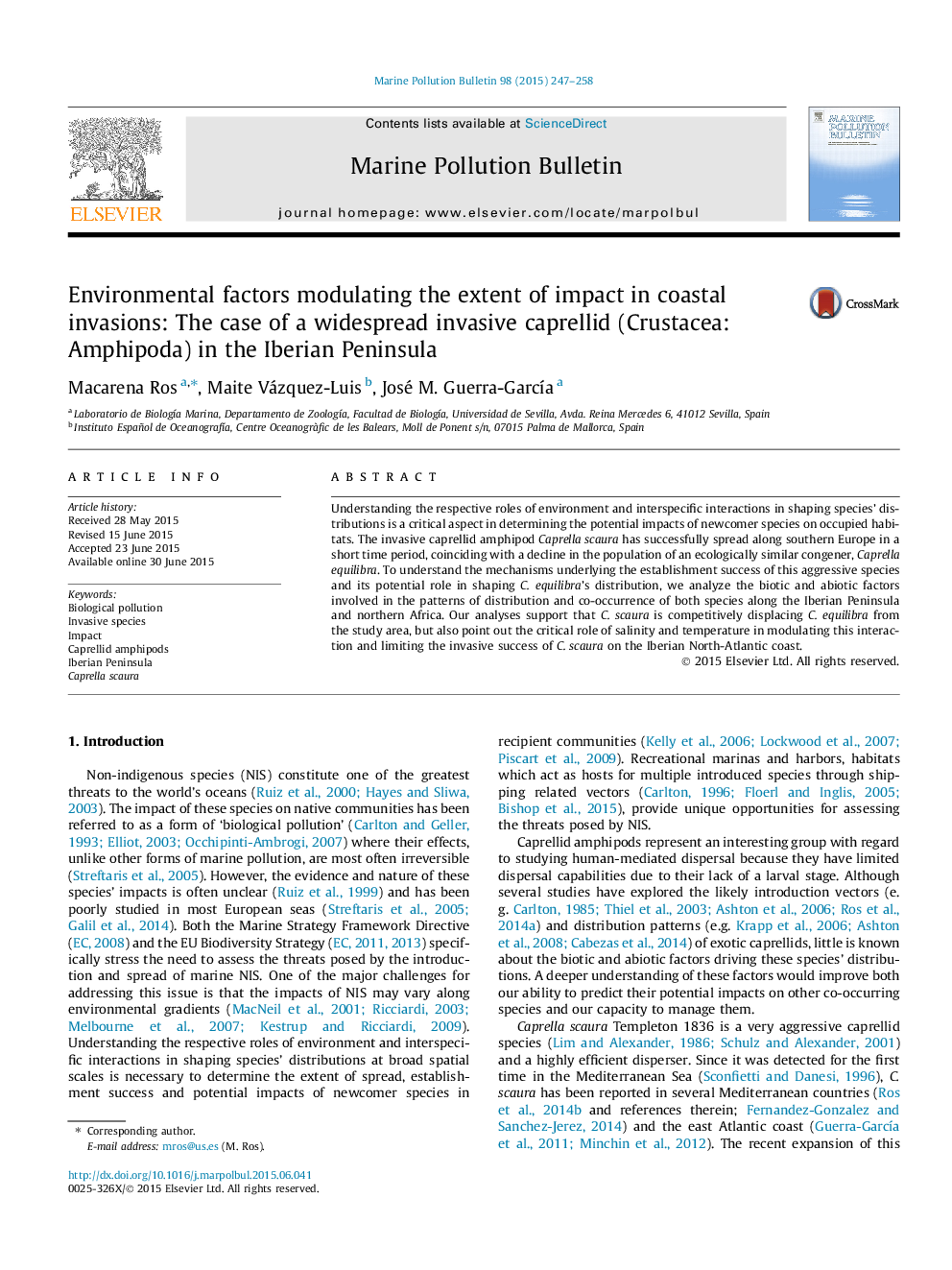| Article ID | Journal | Published Year | Pages | File Type |
|---|---|---|---|---|
| 4476715 | Marine Pollution Bulletin | 2015 | 12 Pages |
•Biological pollution in European Seas is poorly studied.•Caprella scaura is an aggressive and widespread marine invasive crustacean in Europe.•An exclusion pattern was found between C. scaura and an ecologically similar congener.•The invader significantly contributed in shaping the native congener’s distribution.•Salinity and temperature are key factors in modulating this interaction.
Understanding the respective roles of environment and interspecific interactions in shaping species’ distributions is a critical aspect in determining the potential impacts of newcomer species on occupied habitats. The invasive caprellid amphipod Caprella scaura has successfully spread along southern Europe in a short time period, coinciding with a decline in the population of an ecologically similar congener, Caprella equilibra. To understand the mechanisms underlying the establishment success of this aggressive species and its potential role in shaping C. equilibra’s distribution, we analyze the biotic and abiotic factors involved in the patterns of distribution and co-occurrence of both species along the Iberian Peninsula and northern Africa. Our analyses support that C. scaura is competitively displacing C. equilibra from the study area, but also point out the critical role of salinity and temperature in modulating this interaction and limiting the invasive success of C. scaura on the Iberian North-Atlantic coast.
